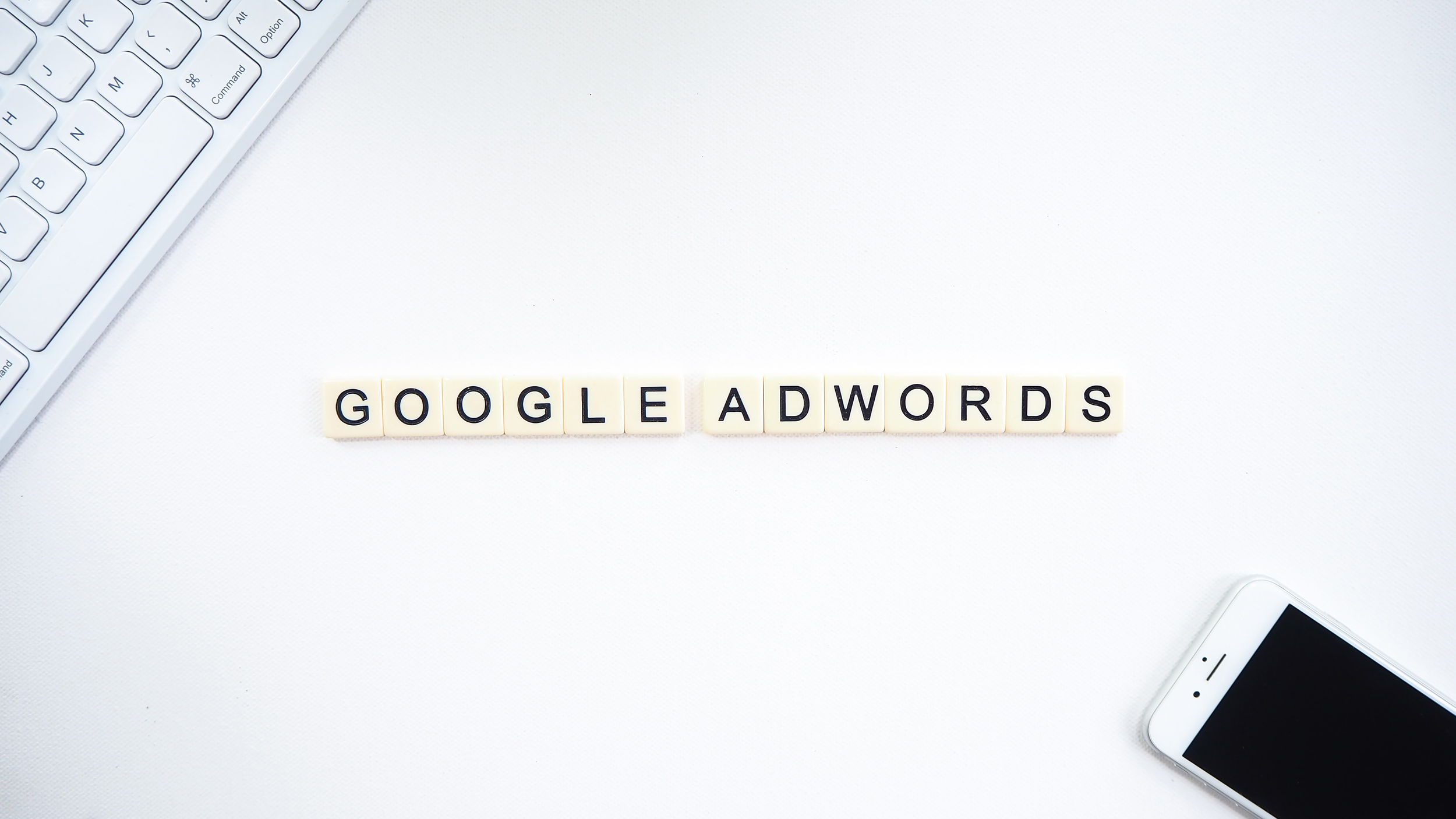Search Engine Marketing is a crucial tool for businesses in today’s digital age. It helps businesses reach their target audience and drive traffic to their website, ultimately leading to an increase in sales and revenue. In this article, we will discuss what Search Engine Marketing is and the different aspects of it. We will also delve into how all this works, its significance for business growth, and the creation of an effective Search Engine Marketing campaign strategy with keyword research tactics.
Additionally, we will analyze the differences between SEO and SEM and whether they can work together. By the end of this post, you’ll have a better understanding of how to master search engine marketing and take your business to new heights.
Understanding Search Engine Marketing (SEM)
Understanding Search Engine Marketing:
Search Engine Marketing drives targeted traffic to your website, increasing brand visibility and awareness. It allows you to target specific keywords relevant to your business, offering measurable results and ROI. paid ads complement other digital marketing strategies, making it an effective way to maximize your online presence. With search marketing being the first step can be, PPC advertising through platforms like Google AdWords and Bing Ads can put your website at the top of the SERP. By utilizing SEO tools like Google Trends and conducting site audits, you can ensure your website has relevant content that appeals to user types. The auction process, guided by factors like the highest quality score, determines your ad’s position on the SERP. In the long run, investing in SEM can lead to significant growth for your business.
Defining Search Engine Marketing
Defining Search Engine Marketing encompasses the process of marketing a website through search engines. It involves advertising on search engine results pages (SERPs) and incorporates both organic search results and paid search ads. The primary goal is to enhance a website’s visibility and search rankings, ultimately driving relevant and high-quality traffic. Search Engine Marketing is a highly effective way to capture commercial intent, as it enables businesses to display their offerings at the top of the SERP through PPC advertising platforms like Google AdWords and Bing Ads. By utilizing SEO tools such as Google Trends, site audits, and Google Ads Keyword Planner, marketers can strategize and optimize their marketing efforts. Search Engine Marketing (SEM), with its auction process and highest quality score, provides an opportunity for businesses to achieve long-term success and maximum ROI.
The Evolution of Search Engine Marketing
Search Engine Marketing has come a long way from its early days of keyword stuffing. Today, it takes a more holistic and user-centric approach, focusing on content quality, user experience, and relevant keywords. With changing search engine algorithms like those of Google, Search Engine Marketing has had to adapt, incorporating social media marketing and content marketing strategies into its arsenal. These advancements align with evolving technology and user behavior. The emphasis is now on providing value and relevance to the audience rather than simply manipulating search results. Tools like Google Ads Keyword Planner and site audits help marketers stay at the top of the SERP by ensuring that their websites have the highest quality score. Paid ads have become an effective way to drive targeted traffic to websites and achieve commercial intent through PPC advertising, making it an essential component of any digital marketing strategy.
The Mechanism of Search Engine Marketing
SEM, or search engine marketing, operates through a simple mechanism. It involves bidding on keywords that are relevant to your target audience. When users perform a search on search engines like Google, paid ads are displayed on the search engine results page (SERP) based on the results of an ad auction. The ad rank is determined by various factors, such as the bid amount, the quality of the ad, and the landing page experience. paid ads utilize a cost-per-click model, meaning you are only charged when a user clicks on your ad. To optimize Search Engine Marketing ads, conduct thorough keyword research, craft compelling ad copy, and ensure your landing page is optimized for conversions. By employing these strategies, you can maximize the effectiveness of your marketing efforts and reach the top of the SERP. SEO tools like Google Ads Keyword Planner can assist in the auction process and help you identify keywords with commercial intent. Overall, paid ad marketing is an effective way to increase visibility, drive targeted traffic, and achieve business goals.
How Search Engine Marketing Works?
Search Engine Marketing (SEM) works by conducting keyword research to identify relevant search terms. Advertisers create ads that target specific keywords, ad groups, and campaigns. These ads participate in an auction, where the highest bid and quality ad win placement on the search engine results page. When users click on these ads, advertisers pay the search engine a predetermined amount per click.
Different Aspects of Search Engine Marketing
Search Engine Marketing encompasses various aspects of search engine marketing, including search engine optimization (SEO) and search advertising (PPC). It involves strategies for both organic search rankings and paid search ads. A crucial aspect of running paid ads is keyword research, which helps identify the most relevant search terms for targeting. Ad campaign optimization plays a significant role in ensuring maximum visibility and effectiveness. Landing page optimization is another key factor in enhancing conversion rates. Search Engine Marketing (SEM) also considers factors like quality score, ad rank, maximum bid, and ad group structure to achieve optimal results. In addition, paid ad strategies often involve content marketing, social media marketing, and precise keyword targeting to reach the desired audience. Utilizing these different aspects of SEM can help businesses increase their online visibility, drive targeted traffic, and achieve their marketing goals.
Significance of Search Engine Marketing for Business Growth
Ranking high in search results is crucial for businesses looking to increase their visibility, organic traffic, and potential customer base. With paid ads, businesses can target specific keywords that are relevant to their products or services, ensuring that their ads appear when users search for those terms. This allows them to reach a larger audience and expand their customer base. By investing in paid ads, businesses gain a competitive advantage by increasing their search visibility over competitors. Additionally, paid ads provides measurable results, allowing businesses to track the effectiveness of their marketing efforts and make data-driven decisions. Overall, SEM is an effective way for businesses to maximize their online presence and drive growth in the ever-competitive digital landscape.
Importance of Ranking
Ranking high in search results is crucial for the success of any website. It increases the chances of getting organic clicks and drives relevant, quality traffic. When a website ranks on the first page of search results, it gains more visibility and attracts potential customers. Higher rankings also enhance a website’s credibility and trustworthiness, making users more likely to engage with its content. In the competitive world of search marketing, being at the top of the SERP (Search Engine Results Page) gives businesses a significant advantage. Users tend to click on the top results, so achieving a higher ranking creates a competitive edge. Therefore, focusing on search engine marketing strategies is an effective way to improve rankings and drive organic growth. SE tools like Google AdWords and Bing Ads can help businesses optimize their ad campaigns, targeting specific keywords and reaching their desired audience. By consistently providing relevant content and optimizing their website, businesses can increase their chances of ranking higher in search results and attracting more potential customers.
Impact of Search Engine Marketing on Business Visibility
Increased visibility is one of the key benefits of search engine marketing for businesses. By utilizing smart techniques such as search marketing and PPC advertising, businesses can improve their visibility on platforms like Google AdWords and Bing Ads. This increased visibility allows businesses to reach a larger audience and boost their brand exposure and awareness.
Search Engine Marketing also provides the opportunity to target specific geographical areas, making it an effective way to reach local customers. Moreover, having high visibility through Search Engine Marketing can enhance a business’s reputation and industry authority. When a business consistently appears at the top of the SERP (SE Results Page), it demonstrates its relevance and trustworthiness to potential customers.
Furthermore, increased visibility through Search Engine Marketing leads to more organic search traffic and potential conversions. By using professional tools like Google Ads Keyword Planner and conducting site audits to ensure relevant content, businesses can maximize their SEM marketing efforts for the highest quality score in the auction process. This ensures that their ads are shown to user types with commercial intent, ultimately driving more targeted traffic to their website.
Strategy Creation for Search Engine Marketing Campaign
Conducting keyword research is the first step in creating an effective search engine marketing campaign. It involves identifying relevant and high-converting keywords that align with your business objectives. Once you have a list of keywords, the next step is to develop a comprehensive ad campaign structure. This includes organizing your keywords into relevant ad groups and creating compelling ad copy that entices users to click. Additionally, optimizing your landing pages and user experience is crucial for maximizing conversions.
Setting a budget, bid strategies, and campaign goals based on your business objectives will ensure that you allocate the maximum amount of resources in the most effective way. Continuously monitoring, analyzing, and optimizing your Search Engine Marketing campaign will help you stay on top of the SERP and drive maximum results. Utilizing SEO tools like Google Ads Keyword Planner can provide valuable insights into traffic trends and competition. By following these steps, you can create a successful paid ad campaign that reaches your target audience and achieves your business goals.
SEO Keyword Research Tactics
Effective search engine marketing requires careful keyword research tactics to maximize visibility and stay ahead of the competition. One important tactic is finding relevant keywords with high search volume to ensure maximum exposure. This can be done by utilizing keyword planner tools, such as Google Ads Keyword Planner, to identify the right keywords for your target audience.
Another crucial tactic is conducting competitive keyword research to understand what keywords your competitors are targeting. This knowledge can help you optimize your ad campaigns with specific keywords that have the potential to improve your quality score. Additionally, implementing negative keywords is vital in filtering out irrelevant search queries, ensuring your ads are shown to users with commercial intent.
By employing these SEO keyword research tactics, you can enhance your efforts and achieve greater success in the highly competitive online advertising landscape.
Crafting an Effective Search Engine Marketing Strategy
Crafting an Effective Strategy is the key to achieving success in SE marketing. The first step is to define clear marketing objectives that will guide your efforts. By having a well-defined goal, you can develop a comprehensive account structure for better campaign management. This structure includes creating relevant ad groups and selecting the most effective keywords using SEO tools like Google Ads Keyword Planner.
Next, focus on creating compelling ad copy and landing page content that resonates with your target audience and increases click-through rates. Continuous monitoring and analysis of campaign performance are crucial to making data-driven optimizations. Tools like Google Analytics and site audits help evaluate the effectiveness of your paid ad campaigns.
Another important aspect is strategically allocating your advertising budget to maximize results and ROI. This involves understanding the auction process and bidding strategies in platforms like Google AdWords and Bing Ads. By optimizing your campaigns and aiming for the highest quality score, you can achieve top-of-the-SERP visibility and attract users with commercial intent.
In conclusion, crafting an effective ad strategy involves defining objectives, structuring campaigns, creating persuasive content, monitoring performance, and strategic budget allocation. By implementing these tactics, you can master search engine marketing and achieve long-term success.
SEO and SEM – A Comparative Analysis
Understand the factors that differentiate SEO and SEM strategies. Compare organic rankings of SEO with ad placements. Evaluate the long-term benefits of organic results versus the immediate results of paid ads. Recognize potential customers reached through organic results versus the targeted audience of paid ads. Analyze the best practices of both strategies to determine the right mix for marketing efforts. Search marketing involves optimizing websites to increase visibility on search engine results pages (SERPs). PPC advertising, such as Google AdWords and Bing Ads, allows businesses to place ads at the top of SERPs.
While SEO focuses on obtaining organic results through optimizing websites, Search Engine Marketing leverages paid ads. In the long run, SEO can provide sustainable traffic and higher conversion rates, while paid ads offers immediate visibility. SEO tools like Google Ads Keyword Planner and site audits help in achieving the highest quality score during the auction process. By understanding user types and providing relevant content, businesses can make the most effective use of both SEO and SEM strategies.
Differences Between SEO and SEM
When it comes to search engine marketing, it’s important to understand the differences between SEO and SEM. While SEO focuses on organic results, SEM goes beyond that by including paid advertising. The two strategies have different goals as well. SEO strategies aim to improve organic rankings, while SEM strategies target search ad visibility. Another key difference is the timing of results. SEO efforts take time to achieve, as they require content marketing and building authority. On the other hand, paid ads provide immediate visibility and can generate quick results and new customers.
To optimize for SEO, it’s crucial to create relevant content and conduct site audits to ensure maximum visibility on places like Google and Bing. Search Engine Marketing optimization, on the other hand, involves keyword research and ad campaign management, utilizing tools like Google Ads Keyword Planner. Moreover, SEM operates through an auction process where advertisers bid for ad placements on top of the SERPs (search engine results pages), taking into account factors like commercial intent and the highest quality score.
In conclusion, while SEO and SEM share similarities, their approaches and objectives differ significantly. SEO aims for long-term organic traffic, while Search Engine Marketing focuses on generating immediate results and reaching a targeted audience through paid ads. By understanding these differences, businesses can develop an effective digital marketing strategy that combines both for optimal results.
Can SEO and SEM Work Together?
Integrating SEO and SEM strategies can enhance visibility and results. By combining organic rankings with paid ad visibility, businesses can increase their overall search engine visibility. Coordinating keyword research efforts allows for targeting a wider audience and aligning content marketing with ad campaign strategies creates a consistent user experience.
Conclusion
In conclusion, Search Engine Marketing plays a crucial role in driving business growth and increasing online visibility. By understanding the mechanism of SEM and implementing effective strategies, businesses can improve their rankings and attract more targeted traffic to their websites. While SEO and SEM have their differences, they can also work together to maximize results. It is important for businesses to invest time and resources in Search Engine Marketing campaigns to stay competitive in the digital landscape. So, if you’re looking to boost your online presence and drive more traffic to your website, consider incorporating Search Engine Marketing into your marketing strategy.
Frequently Asked Questions
How does Search Engine Marketing work?
Search Engine Marketing works by bidding on keywords that are relevant to your business. When users search for those keywords, your ads appear on the SERPs. You only pay when a user clicks on your ad (PPC or pay-per-click). The success of SEM campaigns depends on keyword research, ad optimization, and landing page relevance.
What are the benefits of Search Engine Marketing for businesses?
Search Engine Marketing helps businesses increase their visibility, drive targeted traffic, and improve ROI. By using paid ads, businesses can appear at the top of search results, reaching users actively searching for their products or services. SEM offers measurable results, enabling businesses to optimize their campaigns for maximum effectiveness.
What is the difference between Search Engine Marketing (SEM) and Search Engine Optimization (SEO)?
The main difference between SEM and SEO is that SEM involves paid advertisements on search engines, while SEO focuses on improving organic rankings by optimizing website content and structure. SEM delivers immediate results through paid ads, while SEO offers long-term growth and sustainable traffic.
How do I choose the right keywords for Search Engine Marketing?
Choosing the right keywords for Search Engine Marketing involves conducting thorough keyword research using tools like Google Ads Keyword Planner and Google Trends. It’s essential to select high-converting keywords that are relevant to your business and have commercial intent. Combining long-tail and broad keywords can help target specific and broader audiences.
Can I combine Search Engine Marketing and Search Engine Optimization?
Yes, SEM and SEO can work together to enhance your online presence. SEO focuses on organic traffic, while SEM helps you achieve immediate visibility through paid ads. Combining both strategies allows you to dominate the search results and reach a broader audience, improving overall visibility and conversions.


